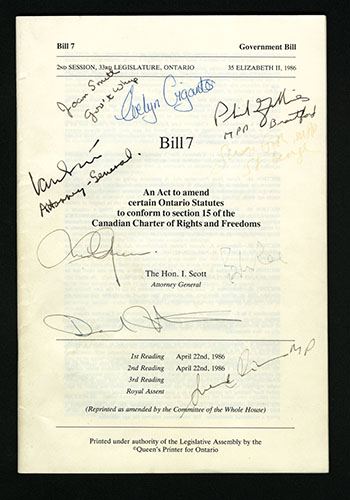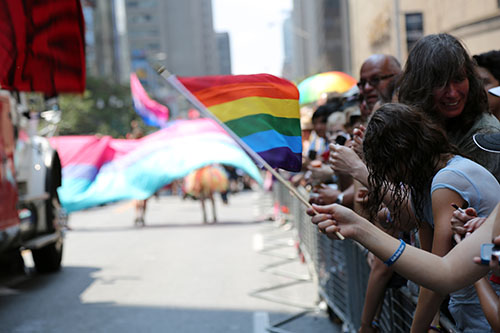David Rayside (Professor Emeritus of Political Science and founding Director of the Mark S. Bonham Centre for Sexual Diversity Studies, University of Toronto), Toronto

Making history
At 6 p.m. on December 2, 1986, Ontario’s legislative assembly was scheduled to vote on adding “sexual orientation” to the province’s Human Rights Code. Ten minutes away, at University College, I ended a late-afternoon class and ran over to the public gallery.
The vote was the only controversial item in Bill 7, with a series of amendments to the provincial Human Rights Code. David Peterson’s minority Liberal government was pressured to add this particular amendment by New Democrats and an LGBT movement with growing visibility and expanding alliances. A tidal wave of opposition was mobilized by Christian conservatives, but the nastiness it unleashed helped supporters, including Attorney-General Ian Scott and NDP member Evelyn Gigantes, convince colleagues of the need for political response to prejudice and discrimination directed at sexual minorities. That Tuesday evening, a majority of legislators – including all three party leaders – carried the amendment and Ontario became the second province (after Quebec) to officially take this early step toward more expansive public policy recognition of sexual diversity.
This story's themes
Photo Gallery
-

Credit: Photo courtesy of the Canadian Lesbian and Gay ArchivesOne of two copies of the bill autographed by supportive politicians and activists. -

Credit: © 2017 Ontario Tourism Marketing Partnership CorporationGay Pride parade
Most viewed themes

